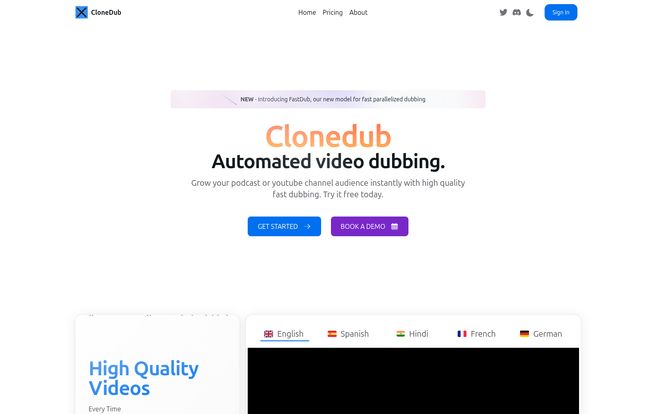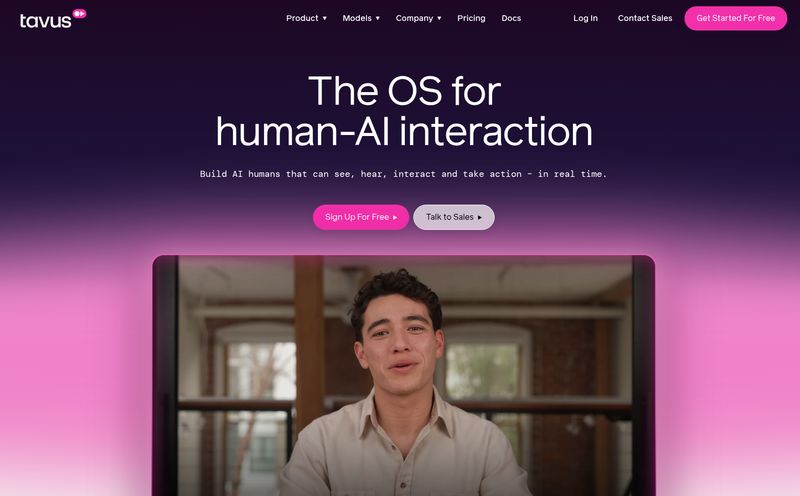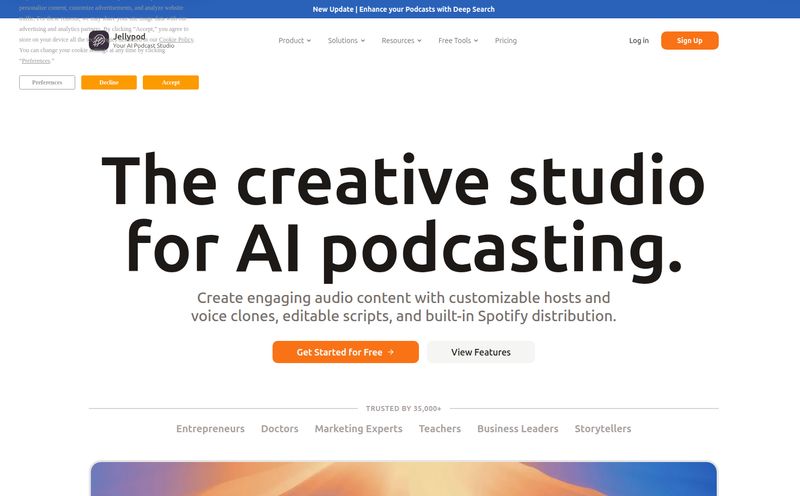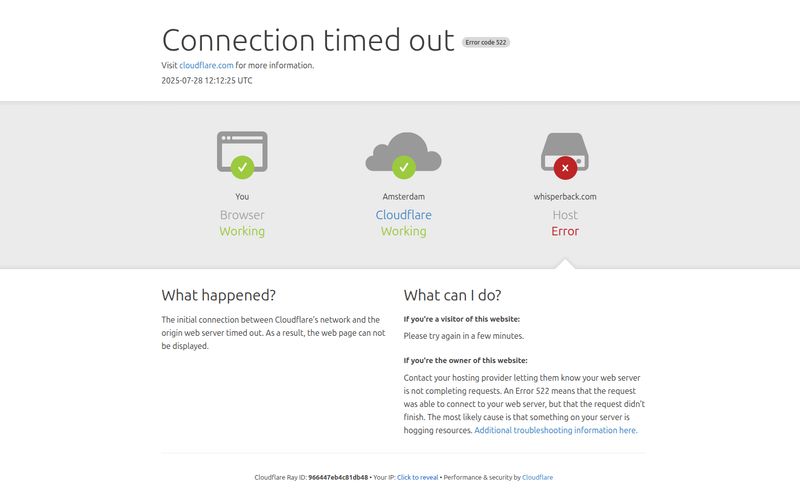For years, I've preached the gospel of global SEO. We chase keywords in different countries, we build hreflang tags until our eyes glaze over, and we tell our clients, "You gotta reach the international market!" But there’s always been a massive, expensive elephant in the room: video.
You can translate a blog post relatively easily. But a video? Your charismatic host, the one your audience loves? Suddenly they're replaced by a generic, soulless voiceover actor who sounds like they're reading the phone book. It just kills the vibe. The cost of hiring professional voice actors, booking studio time, and syncing it all up? Forget about it. It's a logistical and financial nightmare for anyone who isn't a Hollywood studio.
So, when I first heard about tools promising “AI dubbing,” I was skeptical. I’ve seen the early versions. Robotic. Clunky. But the tech is moving at a breakneck pace. And that’s what led me to CloneDub. The promise isn't just translation; it's translation in your own voice. A pretty bold claim. So, naturally, I had to see what was under the hood.

Visit CloneDub
So, What Exactly is CloneDub?
Think of CloneDub as a digital polyglot for your video content. It’s an AI-powered platform that takes your video or audio file, listens to the speaker, and then redubs it into another language. But here's the kicker, the feature that made me sit up and pay attention: voice cloning.
It doesn't just swap your voice for a standard one. It analyzes the unique characteristics of your voice—the pitch, the cadence, the tone—and then generates the translated audio to sound just like you. It’s like giving your content a universal passport, allowing your personality and brand identity to travel across borders, fully intact. Whether you've got one person speaking or a whole roundtable discussion, the tool is built to handle single and multi-voice projects, all while preserving background music and sound effects. It's a pretty slick operation.
Why AI Video Translation is a Game-Changer for Traffic
Okay, let's put on our SEO hats for a second. Why does this even matter? For one simple reason: untapped markets. The English-speaking internet is crowded. Super crowded. Competing for top spots is a brutal, uphill battle. But what about the massive audiences in Spanish, Hindi, French, or German-speaking countries?
By dubbing your YouTube videos or podcasts, you’re not just translating words; you're creating entirely new assets that can rank in those local search engines. You're making your content accessible and, more importantly, preferable to viewers who want to consume content in their native tongue. I’ve seen channels 10x their reach by simply adding high-quality dubbed versions of their top-performing videos. It’s one of the biggest growth hacks sitting in plain sight, and tools like CloneDub are finally making it attainable for creators who don’t have a six-figure budget.
Breaking Down The Core Features
A tool can talk a big game, but the features are where the rubber meets the road. CloneDub has a few standout qualities that are worth talking about.
The Magic of AI Voice Cloning
This is the secret sauce. The difference between a viewer clicking away and staying engaged is often authenticity. When they hear the original speaker's voice, even in a different language, it builds a subconscious layer of trust. A generic voiceover feels like an ad; a cloned voice feels like the original content creator made an effort just for them. It maintains the emotional nuance that's so often lost in translation. This is what sets it apart from basic text-to-speech engines.
Broad Language Support
The platform boasts support for over 27 languages. We're talking about the big ones like Spanish, French, German, and Portuguese, but also expanding into markets with languages like Japanese, Arabic, Polish, Dutch, and Turkish. This isn't just about translating into one extra language; it's about building a truly global content strategy from a single dashboard. You can take one video and spin it out into ten different versions for ten different audiences. That's powerful stuff.
A Refreshingly Simple Interface
I’ve wrestled with enough complicated SaaS platforms to appreciate a clean, easy-to-use interface. CloneDub is pretty much drag-and-drop. You upload your video, select your target languages, and let the AI do its thing. There isn't a steep learning curve, which is a blessing for busy creators and marketing teams who just need to get things done without a week of training.
The Nitty-Gritty: CloneDub's Pricing Plans
Alright, let's talk money. Because at the end of the day, the ROI has to make sense. CloneDub uses a subscription model based on the number of minutes you need to process per month. I actually appreciate this transparency.
Here’s a quick rundown of their main tiers:
- Basic Plan: This one's clearly for the person just starting out or wanting to test the waters. At $10 per month, you get 12 minutes of dubbing. It's not a lot, but it’s enough to convert a couple of short-form videos or your most popular YouTube short to see if it gets traction. Additional minutes are a buck each. Perfect for a trial run.
- Pro Plan: For the more serious creator or small business, the Pro plan at $100 per month gives you 110 minutes. The cost per additional minute drops to $0.90, and you get access to priority support and the coveted custom voice cloning feature. This is the sweet spot for a channel that's regularly producing content.
- Premium Plan: This is for the agencies and big-time media companies. It's a custom plan starting around 400 minutes and going up. The price per minute drops again to $0.80, and you get all the bells and whistles, including one-on-one support. You can adjust a slider to fit your exact needs, which is a nice touch.
It's also worth noting they offer a 30% discount for annual payments, which is pretty standard but always welcome. For anyone serious about this, paying yearly seems like the smart move.
The Good, The Bad, and The Realistic
No tool is perfect. As an SEO professional, I live in a world of trade-offs, and it's only fair to lay them out. On the one hand, the quality of the output is seriously impressive for an automated tool. It's fast, the pricing is competitive when you compare it to manual dubbing, and the language library is extensive.
On the other hand, you have to be realistic. This is still AI. The dubbing speed can depend on how slammed their servers are, and the length of your video plays a big role. A 30-minute podcast episode will naturally take longer than a 2-minute clip. And if you’re doing custom voice cloning for the first time, expect that initial setup to take a bit more time. It’s not instant magic, but it’s a heck of a lot faster than the old way. Patience is a virtue, as they say.
Frequently Asked Questions About CloneDub
How does the voice cloning work?
The AI analyzes a sample of the original speaker's voice to identify its unique characteristics. It then uses this vocal profile as a model to generate the translated audio, ensuring the dubbed version maintains a similar tone and cadence to the original speaker.
How long does a typical dubbing take?
It varies. A short video might be ready in minutes, while longer content can take longer. The complexity (multiple speakers, for instance) and current server load are also factors. The platform generally aims for a quick turnaround, often completing tasks in less than half the video's duration.
Can I cancel my subscription at any time?
Yes, based on the information from their site, you can manage and cancel your subscription. It’s a standard SaaS practice, so you're not locked into a long, scary contract if your needs change.
What video and audio formats does it support?
It’s quite flexible, supporting common formats like MP3, WAV, and FLAC for audio, and MP4, AVI, and MKV for video. This covers the vast majority of what creators use.
What happens if a dubbing task fails?
While tech hiccups can happen, platforms like this usually have a system to restart the task or credit your account back for the failed minutes. Their 24/7 customer support, especially on higher-tier plans, is there to resolve these kinds of issues.
Is there a free trial?
While the homepage mentions "try it free today," the pricing structure points towards the $10 Basic plan as the primary entry point. This acts as a low-cost trial, giving you enough minutes to properly evaluate the service's quality on your own content.
My Final Verdict on CloneDub
So, is CloneDub the magic bullet for global domination? Well, no single tool ever is. But it's an incredibly powerful weapon to have in your arsenal. It effectively removes the biggest barrier to international content strategy: the cost and complexity of high-quality dubbing.
For YouTubers, podcasters, and course creators who have built a brand around their personality, the voice cloning feature is a legitimate game-changer. It bridges the gap between your content and a whole new world of potential fans. While there are minor limitations, the overall value proposition is strong. In an age where standing out is everything, speaking your audience's language—literally—might be the smartest move you can make.



